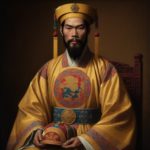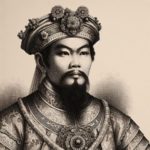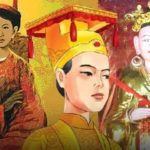In Vietnamese history, Lý Chiêu Hoàng was the only female Emperor. She was also known as Lý Phế hậu or Chiêu Thánh Hoàng hậu. She was the 9th and last Emperor of the Lý dynasty, reigning from 1224 to 1225. Lý Chiêu Hoàng was the daughter of King Lý Huệ Tông and Queen Trần Thị Dung.
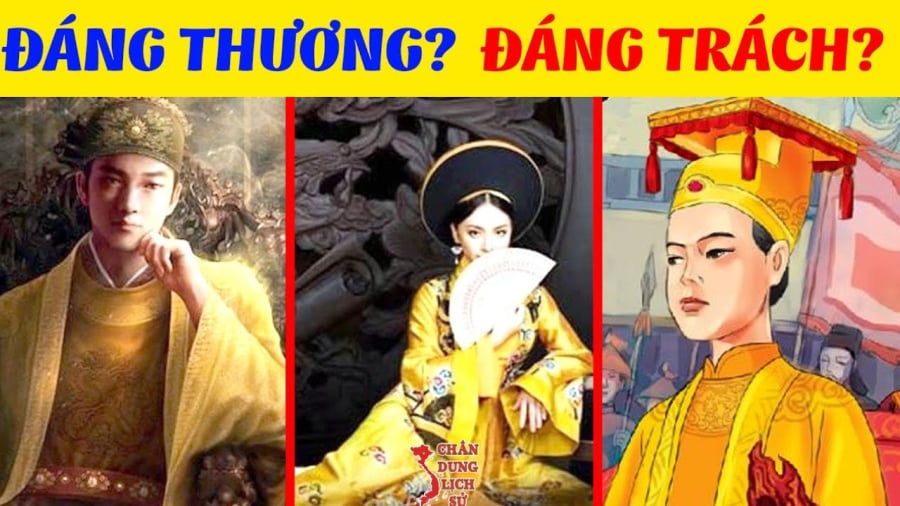
A Child’s Game That Made the Empress Have a 7-Year-Old Husband
According to the Complete Annals of Đại Việt, Lý Chiêu Hoàng ascended the throne in June of the Year of the Fire Monkey (1225). As the Empress ascended the throne at a very young age, the affairs of the court were handled by Queen Mother Trần Thị Dung. At that time, members of the Trần family were also brought into the palace to hold military power and important positions.
During that time, Trần Thủ Độ held the position of Chief Commanding Envoy of the Palace. He arranged for his 8-year-old nephew, Trần Cảnh, to be brought into the palace as the Chief Attendant, with the task of serving Lý Chiêu Hoàng.
Playing with each other is normal for children, let alone a young Empress without playmates within the palace. That’s why, when she met Trần Cảnh, the Empress enjoyed teasing and playing with him. It was precisely because of this that Trần Thủ Độ arranged a marriage and forced Chiêu Hoàng to abdicate the throne to her husband.
The Complete Annals of Đại Việt stated: “One day, when Cảnh was 8 years old, he had to bring water to wash, so he entered the palace. Chiêu Hoàng liked it and every time she played at night, she called for Cảnh to play with her. When she saw Cảnh in the dark, she would tease him by pulling his hair or standing on his shadow.
One day, when Cảnh was bringing water to serve, Chiêu Hoàng splashed water on his face with her hand and laughed, and when Cảnh knelt with a towel, she threw the towel at him.”
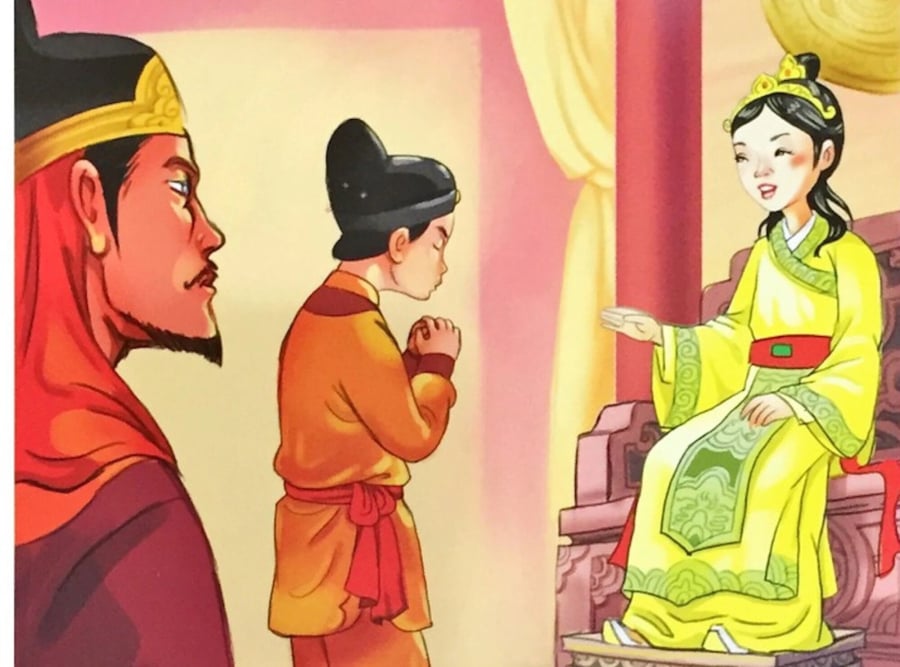
The game of the children was manipulated by the adults. Trần Thủ Độ discussed with his sister-in-law, Queen Mother Trần Thị Dung, to carry out a “palace coup” by boldly bringing all of the royal relatives into the palace.
Later, Trần Thủ Độ ordered his troops to seal the city gates and palace gates, placing strict guards and not allowing officials to enter the palace. When the royal court was sealed, Lý dynasty officials had no reaction because the Trần family held the Empress and Queen Mother as political hostages. Trần Thủ Độ then announced: “Your Majesty is now married.”
Thus, Lý Chiêu Hoàng and Trần Cảnh became husband and wife.
In November 1225, Lý Chiêu Hoàng abdicated the throne to Trần Cảnh. One month later, she handed over the imperial robe to her husband at the Thiên An Palace, officially marking the end of the 216-year-long Lý dynasty.
Trần Cảnh, known as Emperor Thiện Hoàng, ascended the throne and called himself Emperor Thiện Hoàng. Lý Chiêu Hoàng was appointed Empress and her title changed to Chiêu Thánh. She was also the youngest Empress in history, only 7 years old at the time. Her mother, Trần thị Dung, resigned from her position as Princess Thiên Cực and married Trần Thủ Độ. In Việt Sử Tiêu Án, historian Ngô Thì Sĩ strongly criticized this act.
Emperor Thiện Hoàng: The King Who Founded the Trần Dynasty
Emperor Thiện Hoàng, whose real name was Trần Cảnh, was the king who laid the foundation for the Trần dynasty. He ascended the throne at a young age and achieved a glorious career in both military, politics, and economy. It can be said that there were many factors contributing to this brilliant period, but that does not deny the contributions and talents of the king who founded the Trần dynasty.
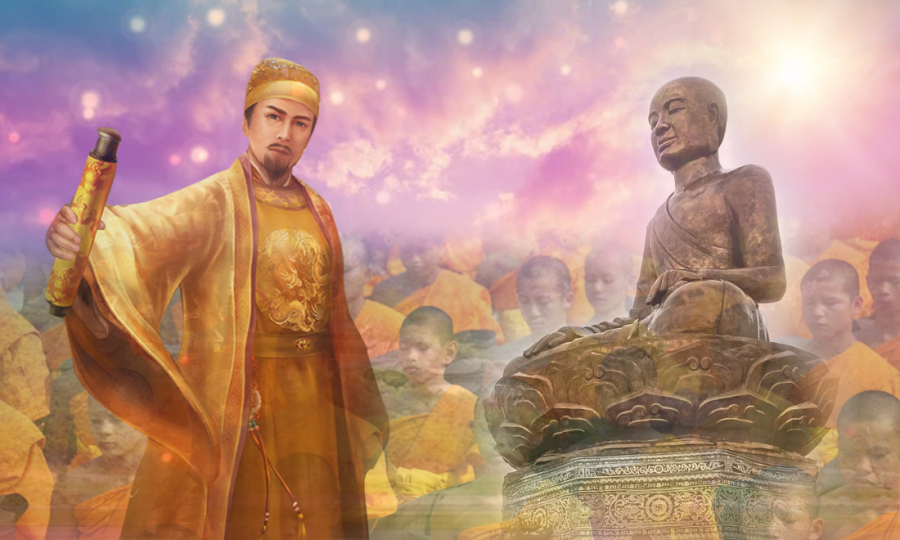
According to historian Lê Văn Lan, Trần Cảnh showed intelligence and cleverness at a young age. In 1225, Trần Cảnh ascended the throne, marking the beginning of the Trần dynasty. As soon as he ascended the throne, Emperor Thiện Hoàng quickly addressed the consequences caused by the late Lý dynasty crisis, especially by encouraging farmers to cultivate land, taking care of water management, and pursuing lenient policies to benefit the people’s livelihood. These policies promoted the development of agriculture and improved the lives of the people.
The rise and fall of a dynasty depended on the governance policies of a wise king, talented generals, and the survival of the nation thanks to good governance that ensured the people’s well-being and a peaceful life. Therefore, Emperor Thiện Hoàng had many economic development policies, built up the military to strengthen and develop the country. He also established a rule to hold the tam khôi examination every 7 years, consisting of three candidates – talented scholar, board label, and examiner to regulate education.
Forced to Divorce and Marry a Pregnant Sister-in-law
Lý Chiêu Hoàng and Trần Cảnh lived together for 10 years with deep affection and respect for each other. However, Lý Chiêu Hoàng’s fate was not spared from tragedies. In 1233, she gave birth to Prince Trần Trịnh, but shortly after giving birth, the Prince passed away. This left a great sorrow in her heart and caused her to fall into illness. Consequently, she was unable to conceive in the following years.
Fearing that this would affect the stability of the monarchy, Trần Thủ Độ forced the King to dethrone the Empress and replace her with Princess Thuận Thiên, who was three months pregnant at the time. At this point, Princess Thuận Thiên was appointed as the Empress. Lý Chiêu Hoàng was demoted to Princess Chiêu Thánh. Overwhelmed with grief, she requested to leave the palace and become a nun.
Both Lý Chiêu Hoàng and Princess Thuận Thiên were daughters of King Lý Huệ Tông and Lady Trần thị Linh.
Princess Thuận Thiên was initially married to Great General Khâm Minh Trần Liễu, the eldest son of Trần Thừa and the elder brother of King Trần Thái Tông.
The King’s act of marrying his sister-in-law, who was also the younger sister of his former spouse, drew criticism from the public. The historian Phan Phu Tiên of the early Lê dynasty commented on this matter: “The three bonds and five constants are the great principles of human society. Emperor Thiện Hoàng was a king who laid the foundation of enlightenment and should have established legal principles to pass on to future generations. However, he succumbed to the cunning scheme of Thủ Độ, who took his brother’s wife as the Empress, which violated both the natural order of things and caused moral chaos.”
Although no specific records of the total number of children are mentioned, according to the genealogy, King Trần Thái Tông had 14 children (10 princes and 4 princesses).
Among them, King Trần Thái Tông and Empress Thuận Thiên had 2 princes together. Both of these princes became famous – the first one, Trần Hoảng, succeeded his father to the throne and became King Trần Thánh Tông. The second son was Trần Quang Khải – a brave and famous military general in history.

























